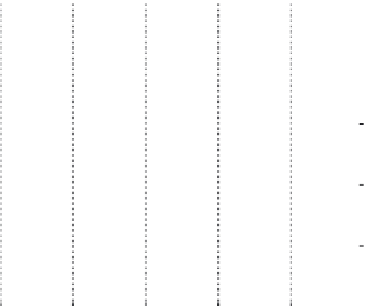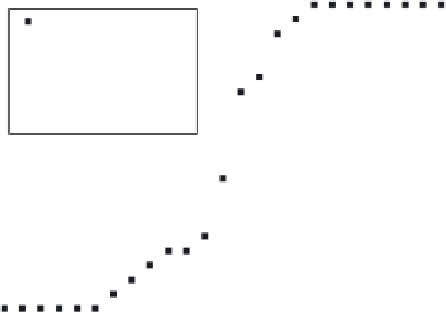Information Technology Reference
In-Depth Information
Pair-wise subjective comparisons of VolP systems
1
Skype vs Google
Skype vs Yahoo
Skype vs Windows
Google vs Yahoo
Google vs Windows
Yahoo vs Windows
0.8
0.6
0.4
0.2
-3
-2
-1 0
Average score in CCR rating
1
2
3
Figure 2.6
Distribution of pair-wise subjective scores of four VoIP systems.
Figure 2.6 illustrate that Windows Live is preferred over the others. These
are consistent with the objective metrics in terms of PESQ, CS, and CE (not
shown). Similar tests have also been conducted to compare the multi-party
version of Skype and our proposed system [10].
Statistical off-Line Subjective Tests.
We have studied the statisti-
cal scheduling of off-line subjective tests for evaluating alternative con-
trol schemes in real-time multimedia applications. These applications are
characterized by multiple counteracting objective quality metrics (such as
delay and signal quality) that can be affected by various control schemes.
However, the trade-offs among these metrics with respect to the subjective
preferences of users are not defined. As a result, it is difficult to select the
proper control parameter value(s) that leads to the best subjective quality
at run time. Since subjective tests are expensive to conduct and the number
of possible control values and run-time conditions is prohibitively large, it
is important that a minimum number of such tests be conducted off-line,
and that the results learned can be generalized to unseen conditions with
statistical confidence. To this end, we have developed efficient algorithms for
scheduling a sequence of subjective tests under given conditions. Our goal is
to minimize the number of subjective tests needed in order to determine the
best point for operating the multimedia system to within some prescribed
level of statistical confidence. A secondary goal is to efficiently schedule sub-
jective tests under a multitude of operating conditions. Its success is based
on the fact that humans can differentiate two such conversations when they
are beyond the JND, aka difference limen [19]. Here JND is a difference in
the physical sensory input that results in the detection of the change 50 per-
cent of the time.






































































